Cover
Table of Contents
Preface
The Audience for This Book
Organization of the Material
Overview of the Book
Background Information
Conventions in This Book
How to Contact Us
Acknowledgments
1. Introduction
1.1 Linux Versus Other Unix-Like Kernels
1.2 Hardware Dependency
1.3 Linux Versions
1.4 Basic Operating System Concepts
1.5 An Overview of the Unix Filesystem
1.6 An Overview of Unix Kernels
2. Memory Addressing
2.1 Memory Addresses
2.2 Segmentation in Hardware
2.3 Segmentation in Linux
2.4 Paging in Hardware
2.5 Paging in Linux
2.6 Anticipating Linux 2.4
3. Processes
3.1 Process Descriptor
3.2 Process Switching
3.3 Creating Processes
3.4 Destroying Processes
3.5 Anticipating Linux 2.4
4. Interrupts and Exceptions
4.1 The Role of Interrupt Signals
4.2 Interrupts and Exceptions
4.3 Nested Execution of Exception and Interrupt Handlers
4.4 Initializing the Interrupt Descriptor Table
4.5 Exception Handling
4.6 Interrupt Handling
4.7 Returning from Interrupts and Exceptions
4.8 Anticipating Linux 2.4
5. Timing Measurements
5.1 Hardware Clocks
5.2 The Timer Interrupt Handler
5.3 PIT's Interrupt Service Routine
5.4 The TIMER_BH Bottom Half Functions
5.5 System Calls Related to Timing Measurements
5.6 Anticipating Linux 2.4
6. Memory Management
6.1 Page Frame Management
6.2 Memory Area Management
6.3 Noncontiguous Memory Area Management
6.4 Anticipating Linux 2.4
7. Process Address Space
7.1 The Process's Address Space
7.2 The Memory Descriptor
7.3 Memory Regions
7.4 Page Fault Exception Handler
7.5 Creating and Deleting a Process Address Space
7.6 Managing the Heap
7.7 Anticipating Linux 2.4
8. System Calls
8.1 POSIX APIs and System Calls
8.2 System Call Handler and Service Routines
8.3 Wrapper Routines
8.4 Anticipating Linux 2.4
9. Signals
9.1 The Role of Signals
9.2 Sending a Signal
9.3 Receiving a Signal
9.4 Real-Time Signals
9.5 System Calls Related to Signal Handling
9.6 Anticipating Linux 2.4
10. Process Scheduling
10.1 Scheduling Policy
10.2 The Scheduling Algorithm
10.3 System Calls Related to Scheduling
10.4 Anticipating Linux 2.4
11. Kernel Synchronization
11.1 Kernel Control Paths
11.2 Synchronization Techniques
11.3 The SMP Architecture
11.4 The Linux/SMP Kernel
11.5 Anticipating Linux 2.4
12. The Virtual Filesystem
12.1 The Role of the VFS
12.2 VFS Data Structures
12.3 Filesystem Mounting
12.4 Pathname Lookup
12.5 Implementations of VFS System Calls
12.6 File Locking
12.7 Anticipating Linux 2.4
13. Managing I/O Devices
13.1 I/O Architecture
13.2 Associating Files with I/O Devices
13.3 Device Drivers
13.4 Character Device Handling
13.5 Block Device Handling
13.6 Page I/O Operations
13.7 Anticipating Linux 2.4
14. Disk Caches
14.1 The Buffer Cache
14.2 The Page Cache
14.3 Anticipating Linux 2.4
15. Accessing Regular Files
15.1 Reading and Writing a Regular File
15.2 Memory Mapping
15.3 Anticipating Linux 2.4
16. Swapping: Methods for Freeing Memory
16.1 What Is Swapping?
16.2 Swap Area
16.3 The Swap Cache
16.4 Transferring Swap Pages
16.5 Page Swap-Out
16.6 Page Swap-In
16.7 Freeing Page Frames
16.8 Anticipating Linux 2.4
17. The Ext2 Filesystem
17.1 General Characteristics
17.2 Disk Data Structures
17.3 Memory Data Structures
17.4 Creating the Filesystem
17.5 Ext2 Methods
17.6 Managing Disk Space
17.7 Reading and Writing an Ext2 Regular File
17.8 Anticipating Linux 2.4
18. Process Communication
18.1 Pipes
18.2 FIFOs
18.3 System V IPC
18.4 Anticipating Linux 2.4
19. Program Execution
19.1 Executable Files
19.2 Executable Formats
19.3 Execution Domains
19.4 The exec-like Functions
19.5 Anticipating Linux 2.4
A. System Startup
A.1 Prehistoric Age: The BIOS
A.2 Ancient Age: The Boot Loader
A.3 Middle Ages: The setup( ) Function
A.4 Renaissance: The startup_32( ) Functions
A.5 Modern Age: The start_kernel( ) Function
B. Modules
B.1 To Be (a Module) or Not to Be?
B.2 Module Implementation
B.3 Linking and Unlinking Modules
B.4 Linking Modules on Demand
C. Source Code Structure
Colophon

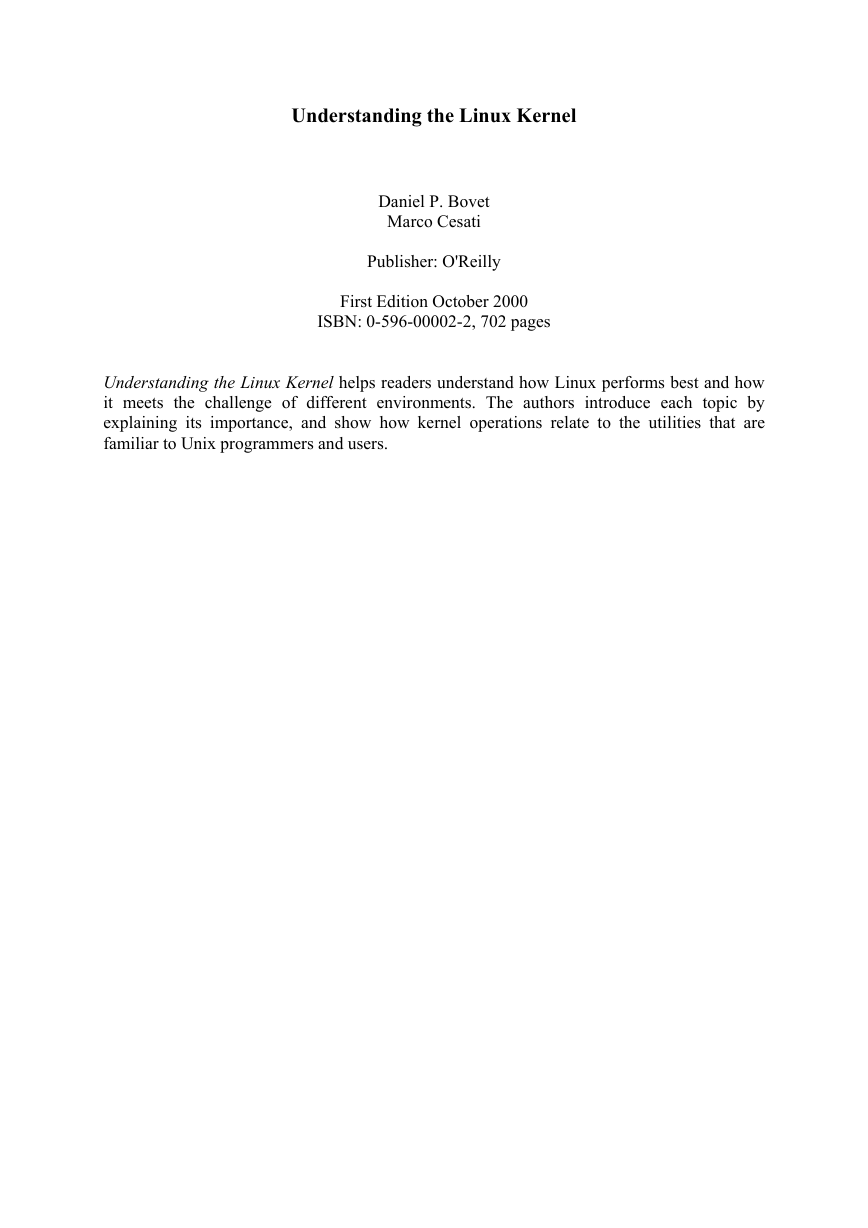

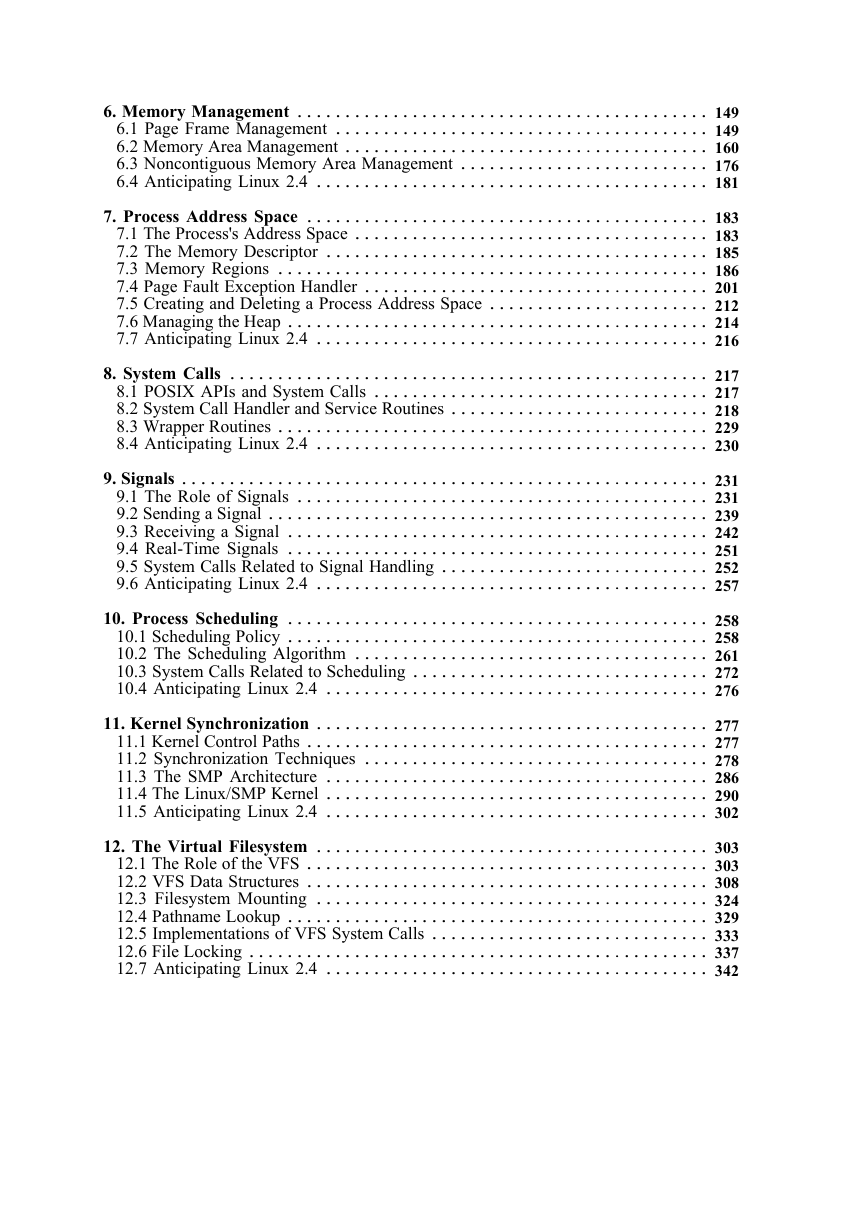
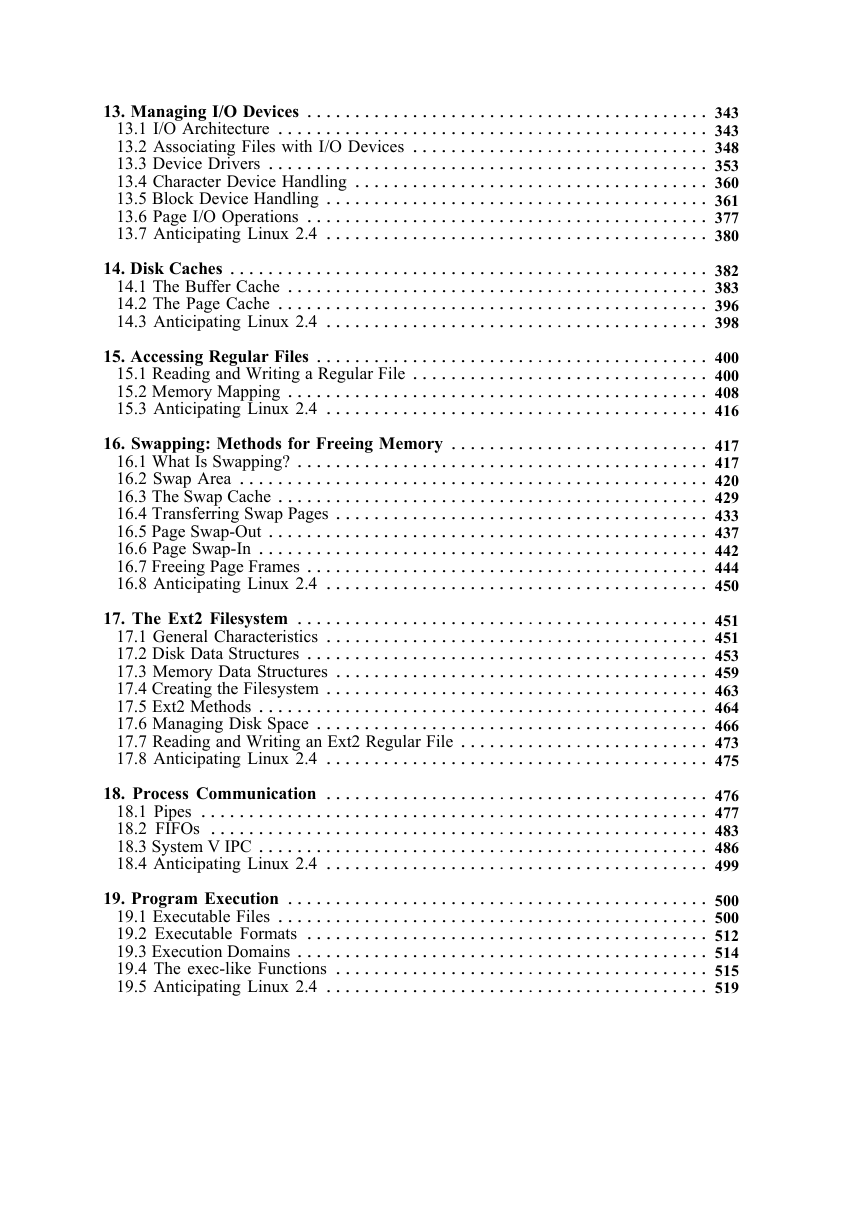
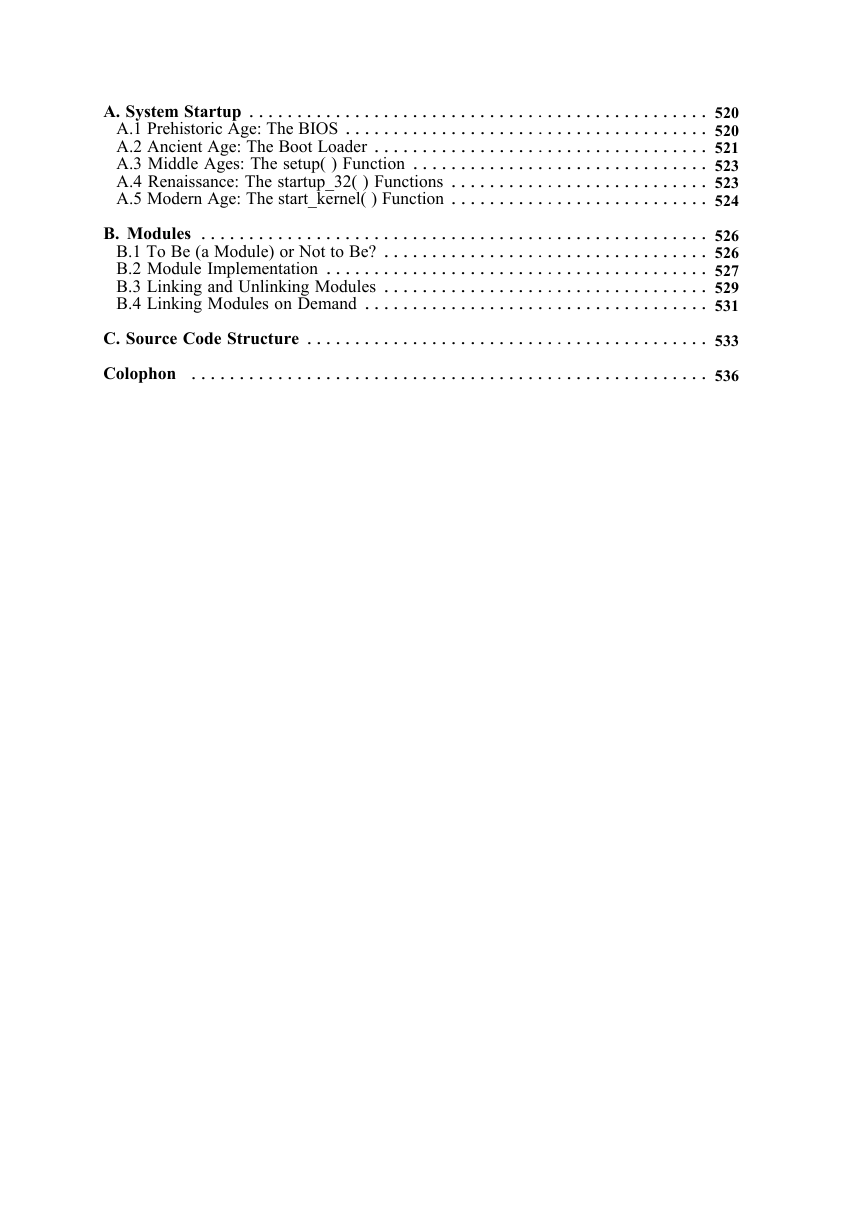
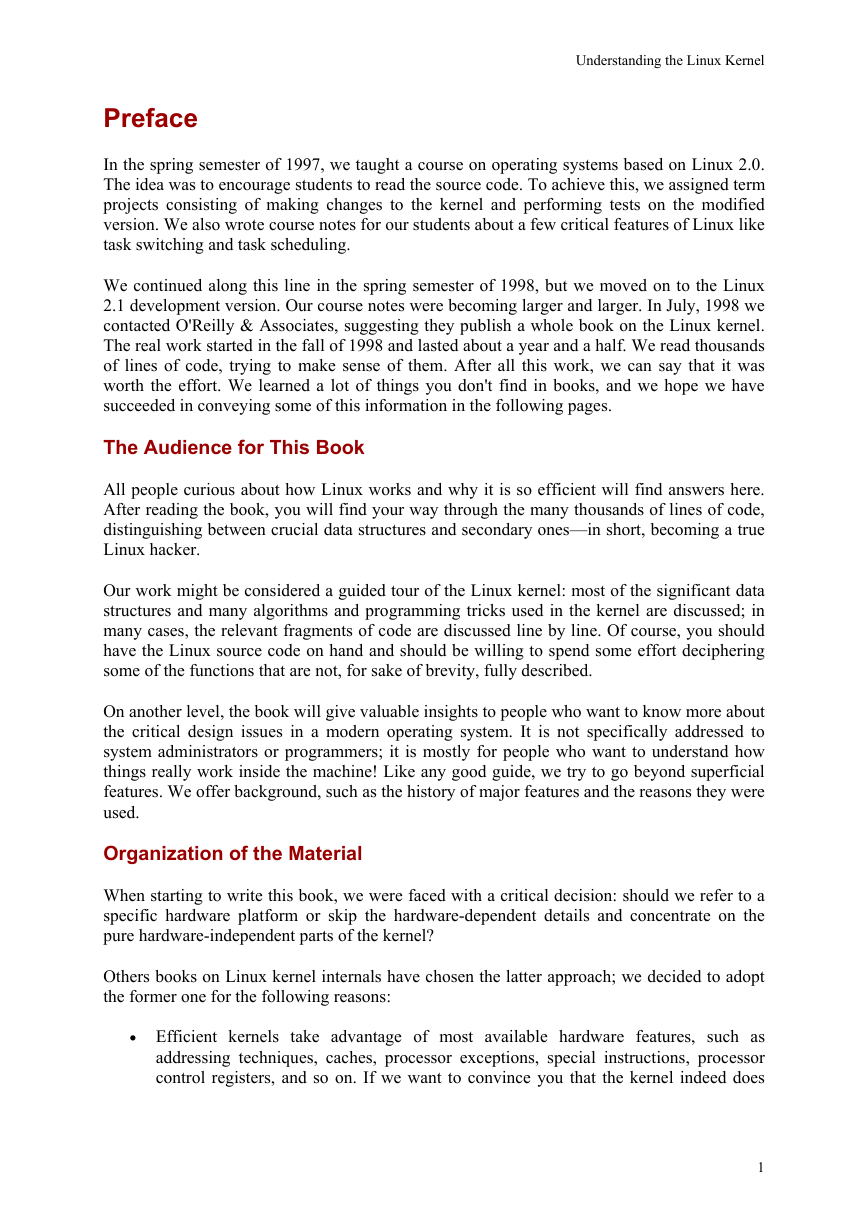
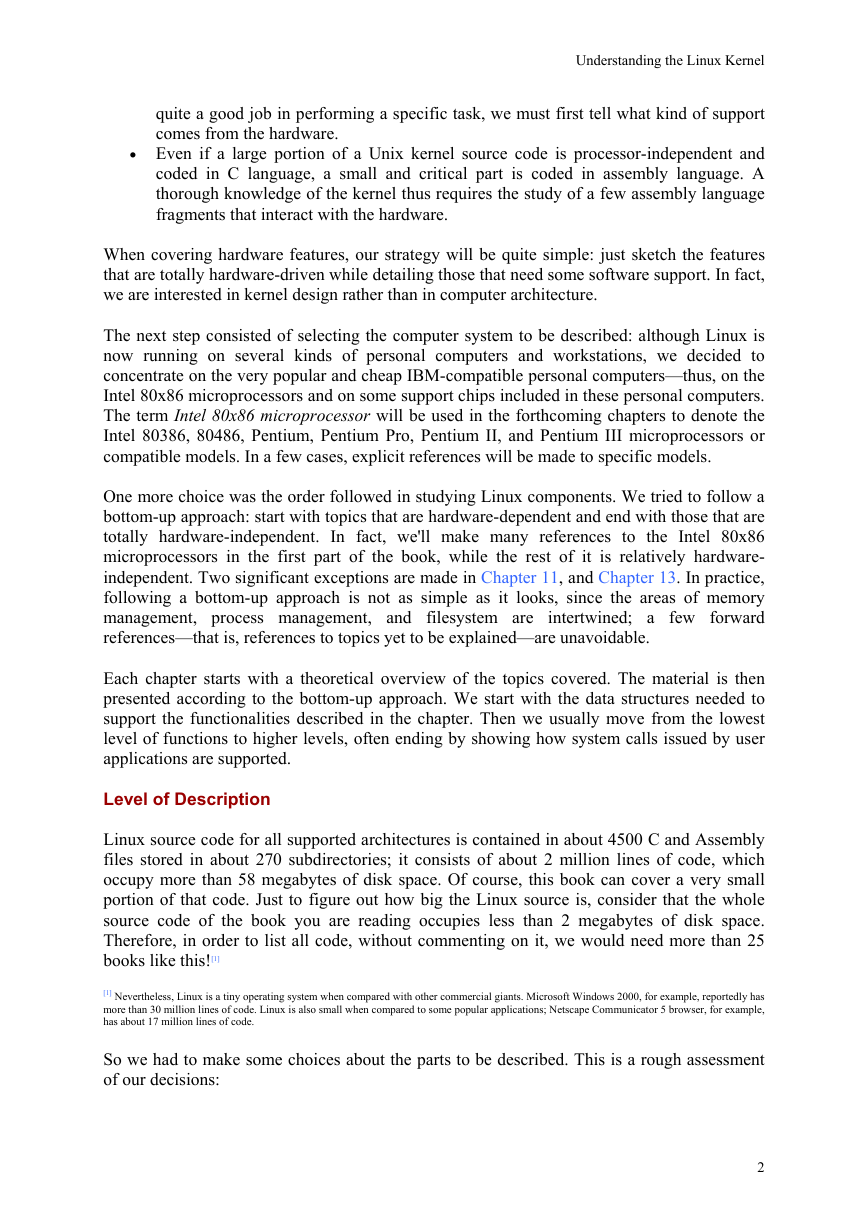








 2023年江西萍乡中考道德与法治真题及答案.doc
2023年江西萍乡中考道德与法治真题及答案.doc 2012年重庆南川中考生物真题及答案.doc
2012年重庆南川中考生物真题及答案.doc 2013年江西师范大学地理学综合及文艺理论基础考研真题.doc
2013年江西师范大学地理学综合及文艺理论基础考研真题.doc 2020年四川甘孜小升初语文真题及答案I卷.doc
2020年四川甘孜小升初语文真题及答案I卷.doc 2020年注册岩土工程师专业基础考试真题及答案.doc
2020年注册岩土工程师专业基础考试真题及答案.doc 2023-2024学年福建省厦门市九年级上学期数学月考试题及答案.doc
2023-2024学年福建省厦门市九年级上学期数学月考试题及答案.doc 2021-2022学年辽宁省沈阳市大东区九年级上学期语文期末试题及答案.doc
2021-2022学年辽宁省沈阳市大东区九年级上学期语文期末试题及答案.doc 2022-2023学年北京东城区初三第一学期物理期末试卷及答案.doc
2022-2023学年北京东城区初三第一学期物理期末试卷及答案.doc 2018上半年江西教师资格初中地理学科知识与教学能力真题及答案.doc
2018上半年江西教师资格初中地理学科知识与教学能力真题及答案.doc 2012年河北国家公务员申论考试真题及答案-省级.doc
2012年河北国家公务员申论考试真题及答案-省级.doc 2020-2021学年江苏省扬州市江都区邵樊片九年级上学期数学第一次质量检测试题及答案.doc
2020-2021学年江苏省扬州市江都区邵樊片九年级上学期数学第一次质量检测试题及答案.doc 2022下半年黑龙江教师资格证中学综合素质真题及答案.doc
2022下半年黑龙江教师资格证中学综合素质真题及答案.doc